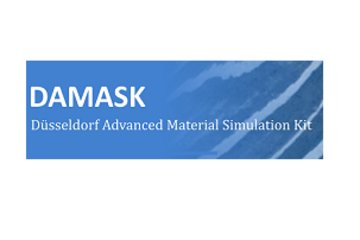All genres
101.
Talk
Korrosion in Müllverbrennungsanlagen. DGM Fortbildungsseminar: Hochtemperaturkorrosion, Jülich, Germany (2006)
102.
Talk
Korrosion durch Chlor und Chloride. DGM Fortbildungsseminar: Hochtemperaturkorrosion, Jülich, Germany (2006)
103.
Talk
Influence of Si, Mn and Cr on the selective oxidation of model alloys. EUROCORR2006, Maastricht, The Netherlands (2006)
104.
Talk
Investigation of the chlorine attack caused by HCl (g) on oxide scales formed on pre-oxidized pure metals and commercial alloys. EUROCORR 2006, Maastricht, The Netherlands (2006)
105.
Talk
Carburisation of Fe–Al alloys at 600°C in flowing CO-H2-H2O gas mixture. EUROCORR 2006, Maastricht, The Netherlands (2006)
106.
Talk
Preparation and electrochemical characterisation by SDC of thin Cr2O3, Fe2O3 and (Fe,Cr)2O3 films, thermally grown on Pt-substrates. 6th Int. Symposium on Electrochemical Micro and Nanosystem Technologies, Düsseldorf, Germany (2006)
107.
Talk
Laboruntersuchungen zur Korrosion in thermischen Anlagen. Fachtagung: Werkstoffe und Verfahren der Energietechnik, Sulzbach-Rosenberg, Germany (2006)
108.
Talk
Einfluss der Veränderungen von gasförmigem Chloranteil und Rohrwandtemperaturen auf die Korrosion unter Belägen. VDI Wissensforum: Beläge und Korrosion in Großfeuerungsanlagen, Hannover, Germany (2006)
109.
Talk
Initial Stages of Oxide Growth on Fe–Al Alloys. 3rd Disc.Meeting on the Development of Innovative Iron Aluminium Alloys, Mettmann-Düsseldorf, Germany (2006)
110.
Talk
Chlorkorrosion an Metallen. Seminar Werkstoffzentrum Rheinbach, Rheinbach, Germany (2005)
111.
Talk
Reaktionsmodelle zur salzschmelzeninduzierten Korrosion. SIDAF Seminar Dampferzeugerkorrosion, Freiberg, Germany (2005)
112.
Talk
Korrosion in Müllverbrennungsanlagen. DGM Fortbildungsseminar: Hochtemperaturkorrosion, Jülich, Germany (2005)
113.
Talk
Korrosion durch Chlor und Chloride. DGM Fortbildungsseminar: Hochtemperaturkorrosion, Jülich, Germany (2005)
114.
Talk
Investigation of the chemical breakdown of protective oxides formed on pre-oxidized alloys caused by HCl (g) and H2O (g). Eurocorr 2005, Lisbon, Portugal (2005)
115.
Talk
Improving Zn-wettability of Fe-Al alloys by selective oxidation/reduction treatments. Eurocorr 2005, Lisbon, Portugal (2005)
116.
Talk
Salt melt induced etching phenomena on metal surfaces. Eurocorr 2005, Lisbon, Portugal (2005)
117.
Talk
Stability of CVD coatings in simulated biomass combustion environments. Eurocorr 2005, Lisbon, Portugal (2005)
118.
Talk
Characterization of Thin Oxide Layers Grown on Fe–15at.%Al. EUROCORR 2005, Lisbon, Portugal (2005)
119.
Talk
Local Measurements of the Semi conducting Properties of alpha-Fe2O3 and Cr2O3 Films by Impedance Measurement using the Scanning Droplet Cell Technique. 9th International Symposium on the Passivity of Metals and Semiconductors, Paris, France (2005)
120.
Talk
Development and Composition of the High Temperature Oxide Film Grown on Fe-15Cr during Annealing. Passivity 9, Paris, France (2005)











